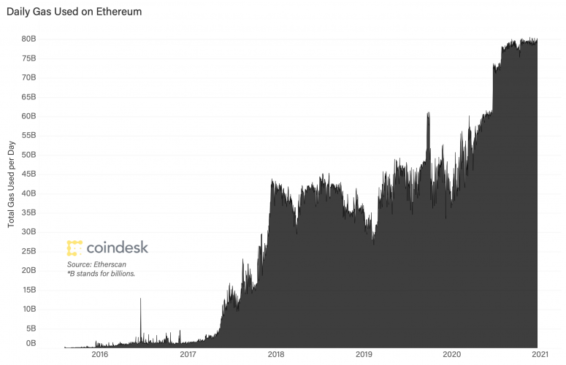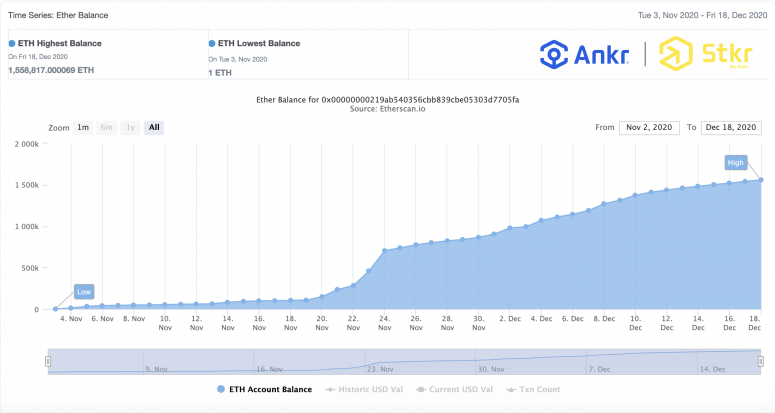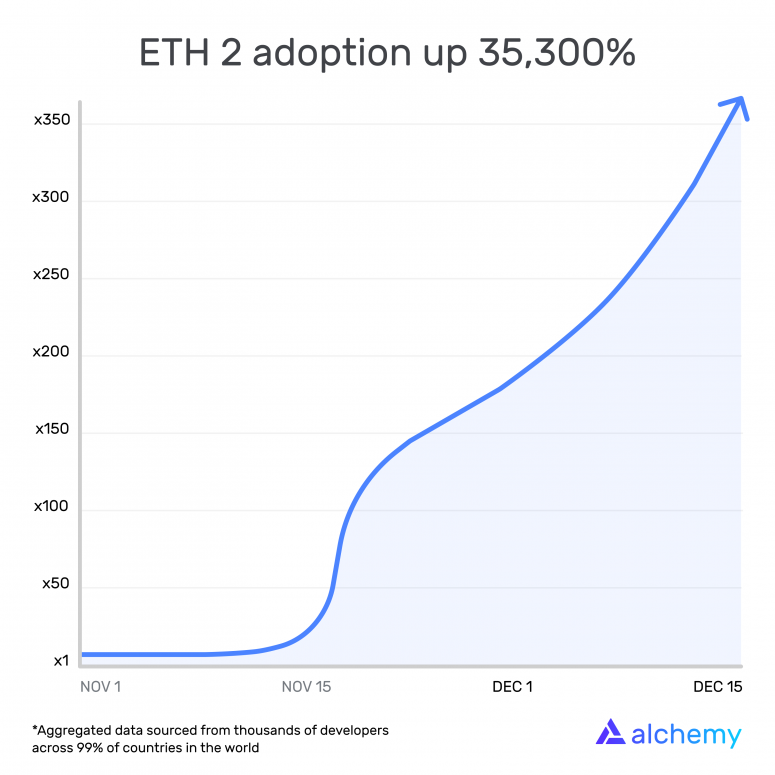In less than 48 hours, 2020 will be behind us.
It almost seems too big a task to recount all that has happened in this world, in this industry and in our own personal lives but our colleague Brad Keoun, editor of CryptoX’s daily cryptocurrency markets newsletter, First Mover, offers an excellent start to summarizing 2020. He writes:
“This year saw the biggest drop-off in economic activity since the Great Depression, the biggest money-printing episode in the Federal Reserve’s 107-year history, an epochal shift toward remote working, negative prices for crude-oil futures and the first real signs the global financial system might be migrating toward fast-growing markets for cryptocurrencies and digital assets.”
2020 also saw an explosive growth in the total value locked and user activity for decentralized finance (DeFi) applications on Ethereum. We witnessed the genesis of Ethereum’s primary scaling solution with the launch of Ethereum 2.0 and the emergence of an entirely new use case for ether through staking.
Where do we go from here? For today’s special, year-end edition of Valid Points, we’ve gathered commentary from the industry’s most well-known Eth 2.0 staking experts. They’ll be illustrating through charts what caught their attention most this past year and what they’ll be watching closely for in the next.
Ethereum: A year in review
Tim Ogilvie, Staked, on gas usage
Our first contribution is from Tim Ogilvie, the founder and CEO of Staked. Staked helps investors earn yield from staking and DeFi without taking custody of their crypto assets.
“My favorite Ethereum chart shows the daily gas usage. I love it because it’s one part of the great story that I expect will propel ETH over the next few years. There are three legs to the stool:
1. Our chart. People are using ETH with increasing frequency, driving increased gas demand.
2. EIP-1559, introducing Fee Burns. This is an upcoming Ethereum improvement that will take all of the gas demand and use it to burn ETH. The more ETH gets used, the more ETH supply gets burned.
3. ETH2: Ethereum’s transition to proof-of-stake, allowing for low issuance of new supply while providing strong security guarantees.
‘Bitcoin has an amazing story as an asset with a fixed supply of 21 million BTC. Ethereum’s story has the potential to be even stronger. If gas usage exceeds supply issuance, you’ve now got a digital asset with a steadily declining supply.
‘My 2021 prediction: This becomes the dominant story around ETH’s valuation and it drives significant price appreciation.”
Jun Soo Kim, stake.fish, on Ethereum’s staking ecosystem
Next, we have the head of strategy and operations for stake.fish, Jun Soo Kim. With support for over 10 different blockchain networks, Jun Soo and his team are working to secure and contribute to an exciting new staking ecosystem and enable users to stake with confidence.
“By far my favorite chart of Ethereum 2.0 is how consistently the participation rate has been averaging at above 98% after the first few days of the Beacon Chain launch. The participation rate shows how well the active validators are doing to stay online and conduct their attestation duties. If the participation rate was any closer to 66%, we would need to be seriously concerned about the network health. But at the current levels, we have a nice big buffer that alleviates any concerns for network finality halts.
“There is also another takeaway from this data. While there are many professional staking service providers running validators on Ethereum 2.0, there is a bigger number of individuals who are operating validators themselves. These independent validators have been contributing to the high participation rate. From this, we can infer that Ethereum 2.0 has achieved its goal of making sure anyone can run validators on their own without having to rely on specialized technical knowledge or hardware. This provides hope that while staking services and exchanges will grow, the number of independent validators will grow as well. Independent validators are key in ensuring Ethereum 2.0 remains decentralized and I hope we keep seeing improvements to the experience of running validators.
“We haven’t even seen the beginning of Ethereum 2.0 integration with DeFi. Tokenized staked ETH and how they become a part of the existing DeFi stack will be a key theme in the first half of 2021.”
Chandler Song, Ankr, on staking growth
Our penultimate contribution comes from Chandler Song, CEO of Ankr. Ankr Network is a San Francisco-based Web 3.0 infrastructure provider working at removing entry barriers and opening Ethereum 2.0 staking to everyone with Stkr decentralized protocol.
“This chart represents the number of ETH sent by validators to the Ethereum 2.0 deposit contract since it went live on Nov. 4. To launch on the planned Genesis date of Dec. 1, 524,288 ETH had to be transferred until Nov. 24. This threshold was met only hours before the activation deadline.
“We see that early on the community was hesitant to stake their ETH. The fact that the staked funds are locked and essentially illiquid for an indefinite period made the progress slow in the first weeks. We think that one of the important factors that helped break the momentum was staking-as-a-service solutions going live with synthetic assets that solve early Ethereum 2.0 liquidity issues.
“We are going to see the growing popularity of liquid bond tokens representing ETH 2.0 stake. These assets have two functions: turn illiquid ETH into a tradable and liquid asset and allow investors to participate in building trust to grow the Ethereum network.”
Mike Garland, Alchemy, on Eth 2.0 adoption
Last but not least, our final chart comes from Mike Garland, product manager for Alchemy. Alchemy is a blockchain developer platform powering 4 million users and $7.5 billion dollars of transactions in 99% of countries worldwide.
“Our favorite ETH 2 graph of 2020 is one which shows the 35,300% increase in global adoption we’ve seen of the Beacon Chain since just before the Dec. 1 launch.
“We’ve seen great developers and teams pouring in to pick up and start using ETH 2.0 and all signs point to even greater adoption going into the new year.
“The ETH and ETH 2.0 ecosystems are only as good as the developers and users that drive them, so seeing this kind of growth so early for ETH 2.0 has us super excited for the year ahead.”
We’ll soon be incorporating data directly from CryptoX’s own Eth 2.0 validator node in our weekly analysis. All profits made from this staking venture will be donated to a charity of our choosing once transfers are enabled on the network. For a full overview of the project, check out our announcement post.







